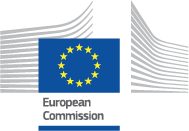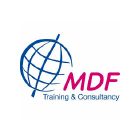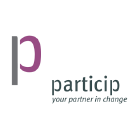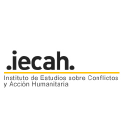WORKING WITH DG ECHO AS A UN AGENCY | 2014 - 2020
4.3 RESULTS
The results are the products and services provided by the Action (i.e. the outputs).
Each result is linked to only one sector. It is possible however to have several results for the same sector. Actions with activities in several, distinct geographic location can use one or several results for each location as long as each result is linked to one sector only.
In the description box, the partner will indicate the title of the result.
One sector per result but what to do if:
Regional action?
The partner has two options: either to present a multi-country result (i.e. 1 sector covering several countries) or mono-country result. In the latter case, the partner will have to add several results covering the same sector. For clarity sake, the partner can indicate the name of the country concerned by the result at the beginning of the result description.
Consortium?
The partner has two options: either to present a multi-partners result (1 sector implemented by several partners) or a mono-partner result. In the latter case, the partner will have to add several results covering the same sector. For clarity sake, the partner can include the name of the FPA implementing partner in the result description.
SECTOR / AMOUNT
In the tab “Sector / Amount”, the partner will indicate in which sector and sub-sectors the Result is active. At least one subsector is obligatory; a sub-sector should be selected if a substantial amount of activities and resources are dedicated to it.
The selection of subsectors marked “… - KRI” adds the KRI of the subsector to the indicator list. (The list of sectors and sub-sectors is provided as annex III of the Singlr Form guidelines).
The partner will also provide the estimated budgetary amount necessary to achieve the result. The estimated amount can be calculated based on the percentage provided per result in the financial statement (section 10.2). This amount does not include indirect costs.
BENEFICIARIES
In the tab “Beneficiaries”, the partner will provide more specific information on the beneficiaries targeted by the result.
4.3.1 Estimated total number of direct beneficiaries targeted by the result: The partner can choose to present the number of beneficiaries as individuals or households and/or organisations. The box “households” will be used when no exact figures are available on individual beneficiaries or when the results foresee a counting by households. When the option “households” is used, the system will calculate automatically the number of individuals concerned. “Households and individuals are mutually exclusive”; the partner has to choose between the two options to enter the number of targeted beneficiaries.
4.3.2 Beneficiary type: The partner should identify the type of the beneficiary. Several options can be selected.
4.3.3 This section is similar to section 3.2.3 presented above with the only difference that in this section the specific target concerns the beneficiaries of the result.
4.3.4 Comments on beneficiaries: The partner can include additional information on beneficiaries. ECHO might require specific information on beneficiaries for certain sectors (for instance, cash and vouchers). Partners will consult the technical annex of the HIPs for more information. However, partners should avoid repeating information already provided in other sections such as the sections in Chapter 3.
TRANSFER MODALITIES
In the tab “Transfer modalities”, the partner will provide detailed information on cash, vouchers and in kind transfers that are going to be used in the context of specific result.
In the Single Form, ECHO expects its partners to use the following definitions of the three types of transfer modalities:
- CASH TRANSFERS are defined as the provision of money to individuals, households or communities. The use of the cash is per definition unrestricted, i.e. the beneficiary can use it at its own discretion. Cash can be transferred in different forms (bank notes, bank cards, unrestricted cash-value vouchers etc). If a cash transfer is designed to meet the needs in only one sector, it is to be reported in the Single Form under a result corresponding to the sector as “Cash (single sector)”. If the cash transfer is designed to cover needs in several sectors, it is to be reported as Multi-Purpose Cash under a result with the dummy sector “Multi-Purpose Cash Transfer”.
- VOUCHERS are used to provide access to pre-defined commodities or services. That means that opposed to cash, they are restricted for use on a specific commodity or service. If a voucher is not tied to a set of predefined commodities or services, they are considered as “cash” and the partner should select the box “cash”.
- IN-KIND TRANSFERS are the direct provision of commodities to the beneficiaries.
The Single Form collects the following information on the transfer modalities:
- Estimated total net amount (for cash and vouchers modality): partner indicates the total net amount in Euro given to all the final beneficiaries / recipients receiving this type of transfer modality in this result. At proposal level the amount is just estimated. At Final Report stage, the partner indicates the total net amount that was transferred;
- Estimated total product cost (for in kind modality): partner indicates the total cost of the products / good / items purchased AND transferred to all the final beneficiaries / recipients in this result. The partner indicates only the procurement costs excluding the costs of transport, storing, etc. At proposal level the amount is estimated. At Final Report stage, the partner indicates the total net amount that was transferred;
Note that the total amount transferred to the beneficiaries cannot exceed the total “Estimated total amount” in the tab “Sector / Amount” of the same result.
- Estimated number of individuals: This is an estimated number of final beneficiaries / recipients receiving this type of transfer modality. If the total number of individuals is not known, please simply multiply the estimated number of households for the estimated average number of individuals per household.
If there are changes in this estimation during the action, please make the update at final report stage; this will not require an amendment by mutual consent, unless the number indicated in the “Beneficiaries” tab changes as well;
- Conditional transfer: This is a drop down menu with 3 options: yes if conditionality is applied, no if no conditionality is applied, mixed if the conditionality applies either to a portion of the beneficiaries only or if some transfers of the same modality will be conditional and other not.
Please note that ECHO defines conditionality as follow: if the beneficiaries are required to fulfil a specific obligation or activity (such as attending school, planting seeds, building shelter, demobilizing, etc.) to receive the transfer, then this is described as a conditional cash transfer.
It is important to justify why conditionality is necessary and applied in the narrative section.
Note that, in case of cash and cash-based vouchers, the conditionality implies mandatory information requested to be eligible.
Note also that if this conditionality changes, this will require a modification request.
- Origin: Origin within the country of action is considered local, within the neighbouring countries regional and from other countries are considered international. One or more boxes can be ticked appropriately. These are mandatory fields for the sectors food security and livelihoods and nutrition. However partners are encouraged to provide this information for any sector.
- Comments on transfer modalities in this result: in this section the partner is invited to provide additional information related to the transfer to beneficiaries (at Proposal, Modification, Final Report stages). For instance it may provide synthetic information on the delivery mechanism, reasons for changes, rationale for the choice of the transfer modality and delivery mechanism, etc. This is an appropriate section to summarize at Final Report level the relevant information on post distribution monitoring. Partners are encouraged to use this section to provide the “mandatory information” required by the Financial Regulation. (See the box above)
Information on transfer modalities can be edited by partner at proposal (RQ), amendment (MR) and final report (FR) stages.
For urgent / emergency actions partners should provide estimated values and then updates the figures later on during the action if possible and certainly at Final Report level
MULTI-PURPOSE CASH TRANSFER
Partners are encouraged to use MPCT when feasible and appropriate. ECHO has a clear definition of Multi-purpose cash transfer (MPCT) : Multi-purpose cash-based assistance can be defined as a transfer (either delivered in several tranches regular or as an ad-hoc payment) corresponding to the amount of money that a household needs to cover, fully or partially, their basic needs that the local market and available services are able to meet appropriately and effectively. Multi-purpose transfers demand greater coordination between humanitarian actors and donors to assess needs and to translate this into a single monetary value, the Minimum Expenditure Basket (MEB). Realistically, humanitarian assistance will contribute to this figure. Beneficiaries will be faced with the need to prioritise how best to use the assistance received so as to ensure that their basic needs are covered.
Under the tab “Sector / Amount” a result is considered as MPCT if it was “designed and planned” to be so in line with this definition given by ECHO. Only unrestricted cash transfers are considered to be MPCT.
Partner can report details on cash distribution by:
-
selecting abstract Multi-purpose cash transfer sector in the tab “Sector / Amount” (there are no subsectors for this sector);
-
filling in all mandatory fields in the tab “Transfer Modality” (only the fields related to cash transfer are visible).
If other modalities that restrict the supplies to specific commodities (i.e. vouchers) are used, these should NOT be included in the same result of MPCT, but rather allocated in another result whose sector is selected appropriately, functional to the specific need covered (for instance, voucher to purchase construction material will be listed under a result having the sector “shelter and settlement” selected.)
N.B. Refer to the Policy document n3. On Cash and Voucher and the Common Principles for Multi-Purpose Cash-Based Assistance adopted in June 2015 in the Council Conclusions of the European Union.
INDICATORS
Indicators are necessary to objectively describe the progress and achievement of the results. Several indicators might be needed to adequately describe a result but their number is limited to 10 per result. The Single Form uses both predefined indicators Key Results Indicators – KRI and custom indicators.
Each KRI is linked to a subsector. When Partner selects a subsector in the tab “Sector / Amount”, the matching KRI, if any, is automatically inserted “Indicators” tab. The (de-)selection of a subsector is the only way to add (and remove) a KRI.
Note that a sub-sector should be selected if a substantial amount of activities and resources are dedicated to it.
Custom indicators are added manually by clicking on “Add new indicator” and removed through the “remove indicator” button.
All indicators on results level including the KRI are output indicators (as opposed to the indicators for the Specific Objective including the KOI which are outcomes).
Manually entered indicators should be objectively verifiable and SMART (specific, measurable, available, relevant and time-bound).
In the definition field, technical terminology used in the indicator is defined if necessary. The partner should also refer to standards as they are defined globally (e.g. SPHERE) or locally (e.g. by the country cluster).
In the baseline box, the partner provides the indicator value at the beginning of the action before any activities start. Baseline data is needed to assess the progress and achievement of the Action. Baseline data should be available before the Action starts as part of the needs assessment. It must be ensured that the unit of the value matches the indicator (absolute figures, proportions, percentages).
In the target value box, the partner will indicate the value it intends to reach by the end of the Action. It must be ensured that the unit of the value matches the indicator (absolute figures, proportions, percentages).
In the source and method of data collection field, the partner has to identify where the indicator data is coming from and how and by whom it is collected (e.g. administrative records, registers, surveys, etc). While designing and implementing the Action, the partner should keep in mind that some methods require a certain amount of planning and resources.
If a partner uses a predefined KRI, the fields for the indicator definition and for the source and method of data collection are automatically prefilled. The “definition” field of a KRI cannot be edited; deviations from the definition should be mentioned in the comments field.
The pre-filled text in the field for “source and method of data collection” is a suggestion based on good practice, but has to be modified to match the actual sources and methods of data collection used by the partner.
For custom indicators, the partner has to provide a definition and source and method of data collection manually.
The list of KRI's is provided in annex.
In the fields “Comments on the indicator”, the partner can provide additional details on the indicator (e.g. locally defined standards) including those requested in the definition of some KRI as well as comments on the progress towards and the achievement of the target.
ACTIVITIES
In the tab “Activities”, the partner can add as many activities as necessary. A short description/title should be provided together with a detailed description In the Logframe, only the short description will be displayed.
While outputs (and output indicators) describe the services and products delivered to the target group (both in quantity and quality), the activities section allows describing how they were delivered and what had to be done in preparation.
In this tab partners should also add the details to be provided on cash and vouchers






